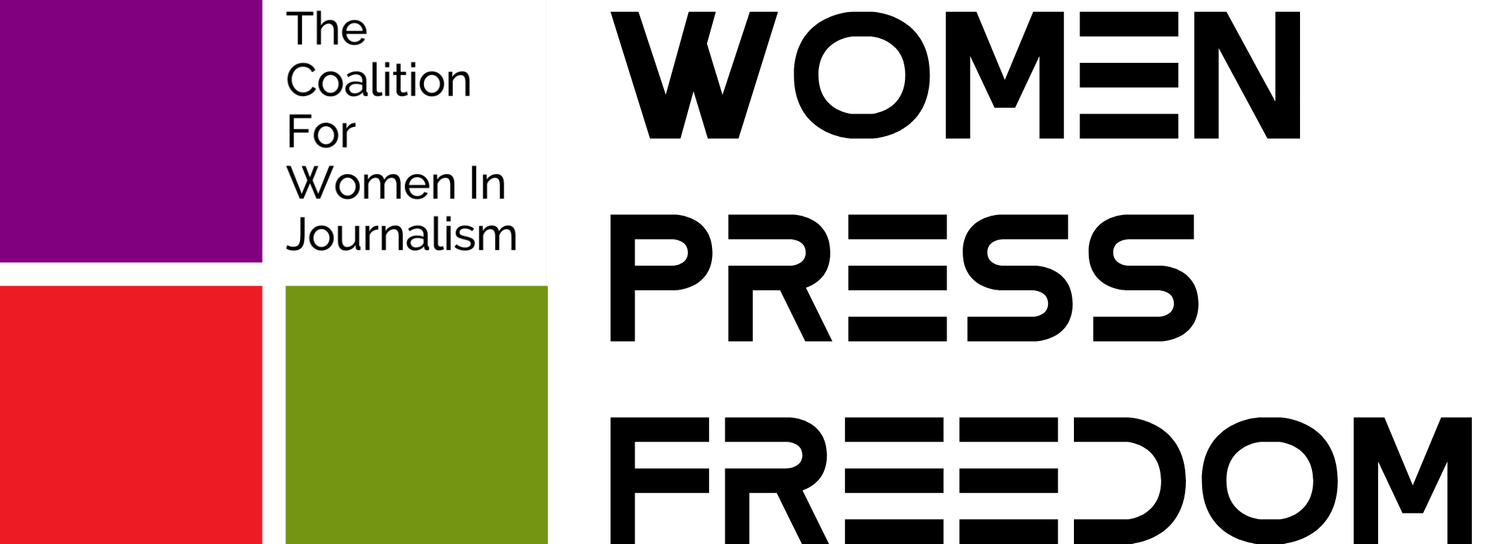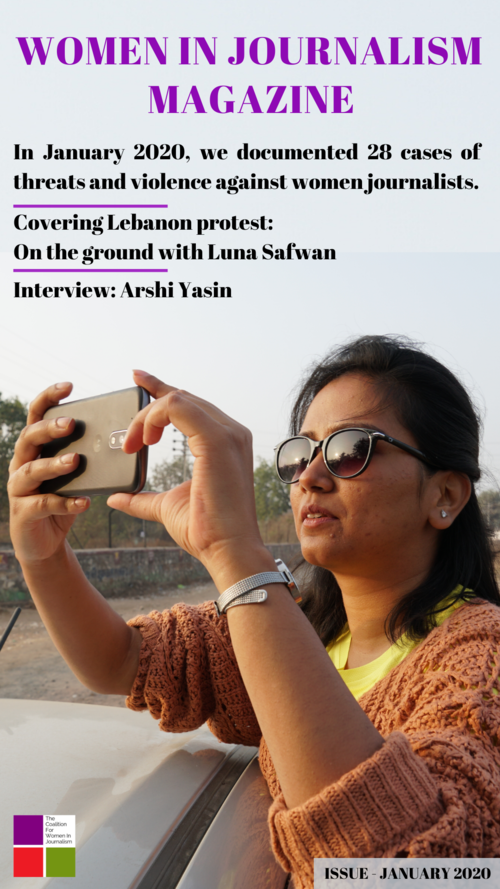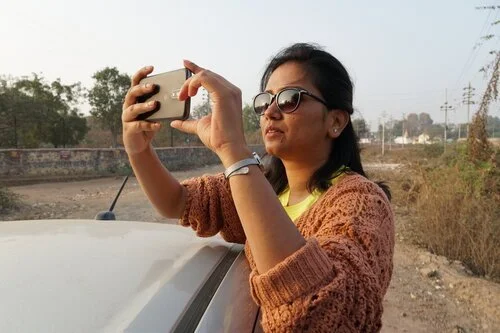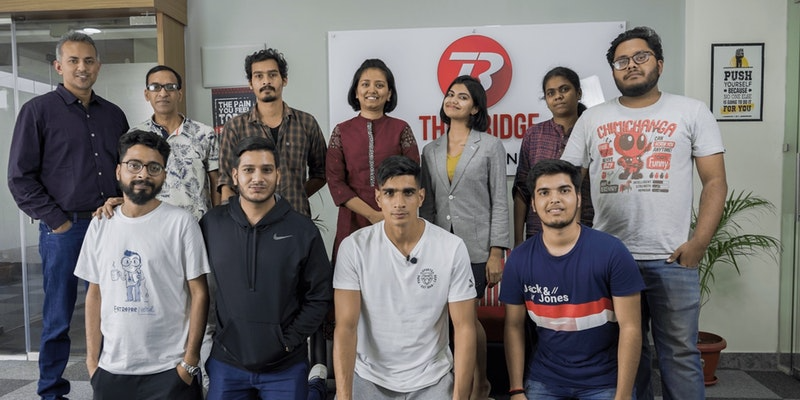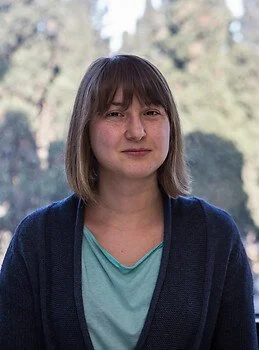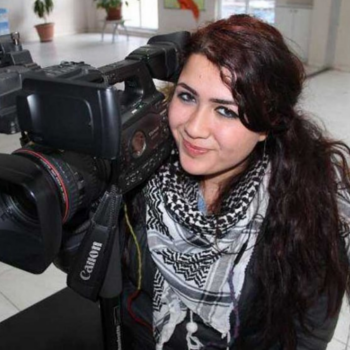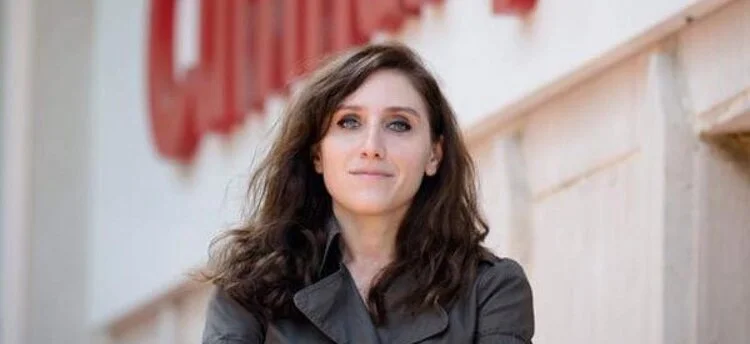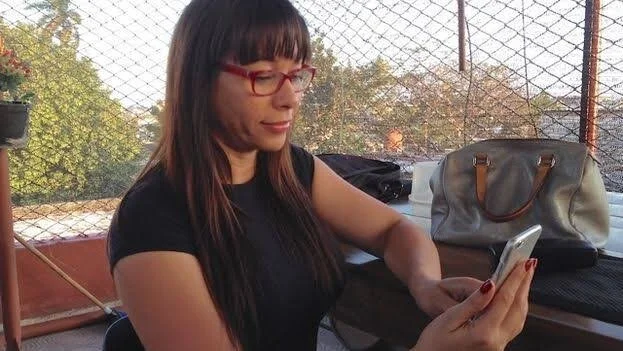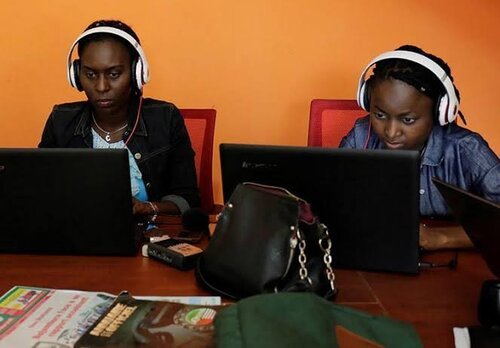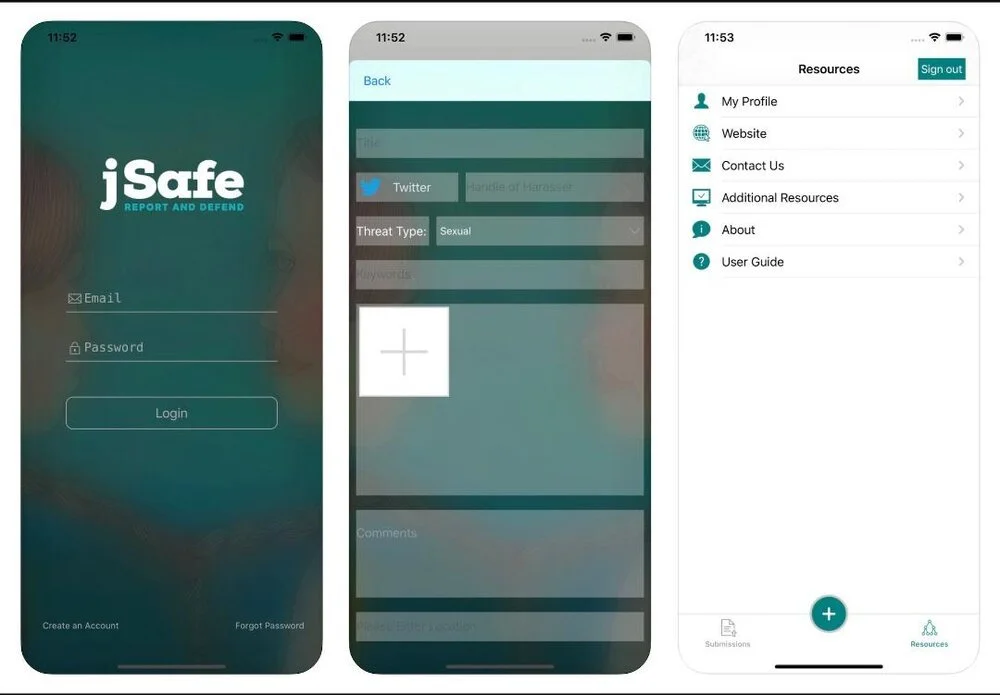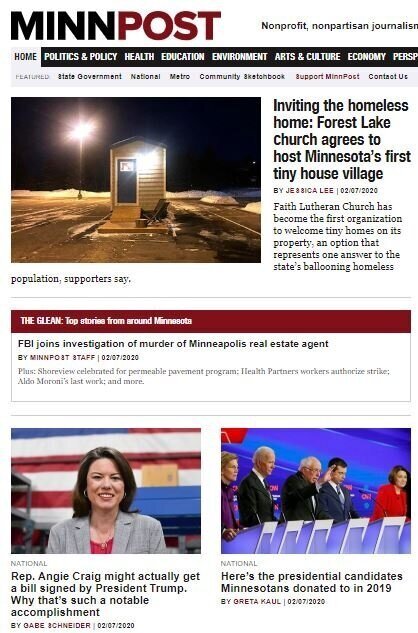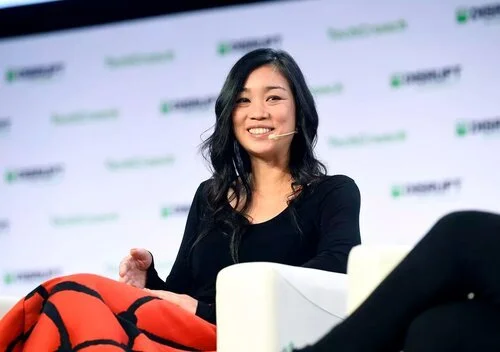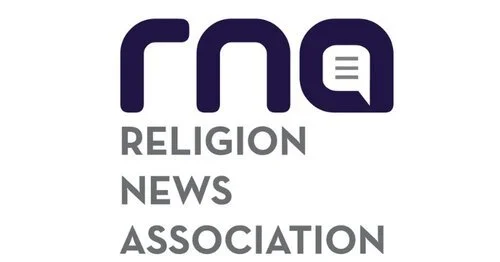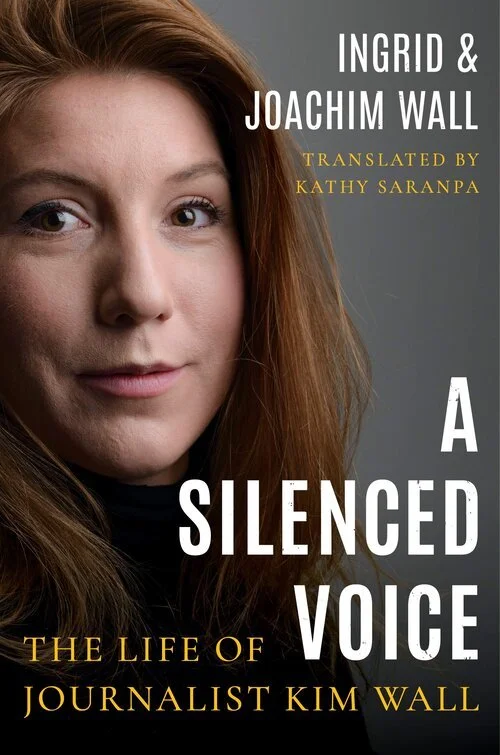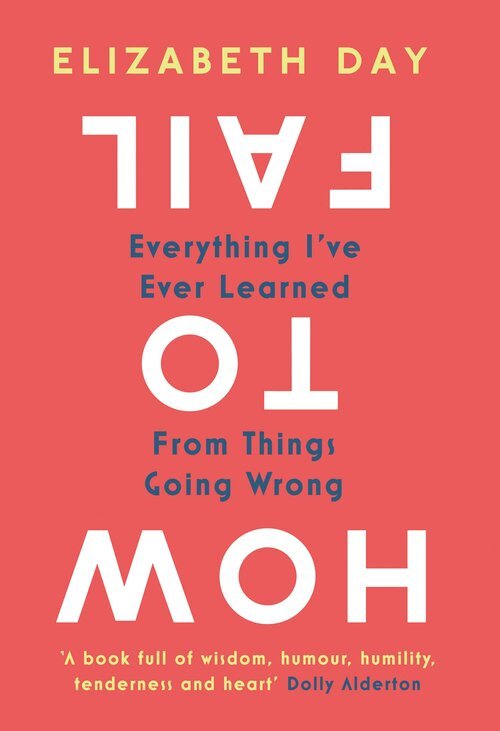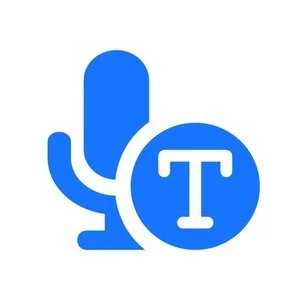January 2020 Issue
In this issue, we spoke with Arshi Yasin and featured some important tips about how to cover protests on the ground by Luna Safwan who is covering in Lebanon. Go read.
Editor’s Note
Hello readers!
We are kicking off this month with a fantastic interview with an Indian media entrepreneur Arshi Yasin. Our freelance writer Rabia Mushtaq got on a one-on-one with Arshi about her journey establishing a successful sports focused digital media start-up called The Bridge.
Following the wave of protests in several countries around the world, we followed the work of women journalists on the ground. While many of our members are covering these stories around the world, we got a hold of CFWIJ alum and star journalist Luna Safwan who has been covering the story from Lebanon. Luna shares with us her reporting hacks amidst a riveting developing story from the streets of Lebanon.
We are super thrilled to announce the beta launch of our safety app for journalists called JSafe. We have worked with the RJI at University of Missouri to develop the app for women journalists but can be used by all journalists to report abuse, harassment, assaults and other forms of threats.
Featured in the magazine, some hot recommendations of badass women journalist employers and on lookers should Watch The ByLine.
This, and more awaits inside Women In Journalism Magazine.
Happy Reading!
Index
Arshi Yasin – On Building ‘The Bridge’
Journalism fascinated Arshi Yasin, the 28-year-old who began her journey from Kishanganj
a small town near the borders of Bihar and Bengal in India – as a college-going student to Bangalore as a journalist/entrepreneur. After studying engineering and spending a few years running social media campaigns for various entities and among her other expertise, Arshi finally found her true calling – sports journalism.
She tapped into the start-up world dedicating her ambitions and skills to establish The Bridge – a digital media house covering all kinds of sports in India using textual and visual storytelling. Arshi co-founded the platform with Shuvro Ghoshal – her colleague from a former workplace – and manages a team of 20, only within a span of two years. Together, they are making waves in the Indian sporting world and sports journalism.
CFWIJ sat down with Arshi to chat about sports journalism in India, social impact of The Bridge, advice for aspiring women sports journalists and much more. Go read.
CFWIJ: Before establishing The Bridge, you worked as a writer, business developer, spearheaded digital campaigns and even headed the Aam Aadmi Party’s social media during its initial years. How did that all come together? And did it all prepare you to start your own digital news platform?
Arshi: In 2016, I came to Bangalore and started working with The Logical Indian – an independent and public-spirited digital media platform for Indian millennials. In 2017, we found out about a women’s ice hockey team in India. It was surprising for us, since India is predominantly obsessed with cricket.
So Shuvro Ghoshal – the co-founder of The Bridge, who was one of the sports writers at The Logical Indian, and I traveled to Ladakh, to work on stories and make documentaries. Upon reaching the region, we learned that the team had to participate in a tournament in Thailand and required funds to do so. We started a social media campaign and contacted the Ice Hockey Federation to arrange for funds. Because of The Logical Indian’s community strength and power of the internet, we were able to raise the funds.
Then Shuvro and I realized that India has so many sports related stories to be told, but there is no platform that focuses on other sports except for cricket. Numerous publications and media houses in different languages cater to cricket, but none of them accommodated other sports.
That’s where we identified a vacuum and found scope in this industry. So in the latter half of 2017, we conceived the idea. Today, if someone asks me about The Bridge’s competition, I say ‘none’. There is no India-centric sports portal that caters to the Olympics and lesser known sports.
CFWIJ: What challenges did you come across when you developed the idea of your start-up and created The Bridge subsequently?
Arshi: Entrepreneurship is not a cake walk. Both my co-founder and I belong to the middle class. We have had our fair share of struggles. But despite that, the most difficult part back then for us was to get the right kind of people for the company. It is still the biggest challenge. We have so many sports, but very few people follow table tennis, boxing, wrestling or weightlifting. But in the past two years, we have been blessed to have identified the right people. We are now a team of 20 people, all of whom are passionate about the work we do. Together, we have done interesting projects in the past two years.
For instance, a team of 16 women football players based in Munger – a city in Bihar, India – wanted to participate in a tournament organized by the United Nations, but they needed shoes – worth INR 90,000 – to play. We published an article on The Bridge and in a span of 24 hours people donated money to buy them shoes. The girls then went to Delhi to participate in the tournament, and won too.
With respect to funding for The Bridge, there was none, initially. But in 2018, we realised the need to expand. So we went out in the market and secured our seed funding, which was in February 2019, almost a year ago. Now, we are operating out of Bangalore and have an office space. This year is very important for us because of the Olympics and we are anticipated to see what is in store for us.Many of us who live here feel that the border has always been this very important dividing line between the ‘first world’ and the ‘third world’. It creates a really intense place – one of excitement, beauty, pain, conflict, poverty and violence, and awareness about them. By focusing on the border we focus on a place of really great importance. The U.S.-Mexico border is a place that requires focus. Trump just intensifies everything by his antagonism towards people from any place of the world, which is basically not in the U.S. or northern Europe. His vision of other places in the world is dark, difficult, nasty and violent. The way he describes other places makes it necessary for people like us to tell the truth and keep our eyes open.
CFWIJ: With reference to the examples you have shared, did you ever think about the social impact of your work when you decided to highlight the often, undercovered sports in India?
Arshi: The social aspect is always there, especially for women in sports. We have come across stories of sportspersons from small villages where women get married at the age of 16, 17 or 18. But then these girls have chosen sports as a way of life, they have played well, they have won on the state and national levels, they keep performing well and have come out to participate in international tournaments. They are doing well for themselves, which is a good example of social impact.
I feel good that I’m contributing my bit in this aspect; every small step counts. I cannot build a viewership of 10 million in a day or a year; it will take time. But all these impactful projects give me strength to move ahead.
CFWIJ: How did you and your co-founder get seed funding for The Bridge? Do you both still struggle with that aspect of your start-up?
Arshi: If an idea is good, if the founders are passionate and get connected to the right set of investors, then it is not that difficult. Every investor is different; some are philanthropic but others focus on the profit that a company can make in a span of five to 10 years. In India, the pie of revenue in sports is dominated by cricket and other sports that are nowhere close to it. Fortunately, our investor is a like-minded individual. Even though The Bridge is a private limited company, he does not just ask us for a balance sheet because sports are very close to his heart, he believes in our idea and that is how he invested in it.
Even today in terms of revenue, the media is not a heavily money-making venture and I do not think it will ever be. We are facing a problem in terms of revenue generation and it is not close to what we forecasted, the economy is also down, and so the marketing budgets are shrinking. But since this is the Olympics year, we are hopeful and making efforts for betterment.
Considering the trends in the last five or 10 years, the popularity of other sports, apart from cricket, has increased in India. Companies are investing in sportspersons through marketing campaigns. Even the sports ministry has increased its budget. This is the most fertile time for anyone who wants to contribute to the Indian sporting system and I am very positive about it.
CFWIJ: The Bridge drew immense traction in a rather short span of time. Did you expect the amount of following it gained, particularly with respect to its contribution to sports journalism in India?
Arshi: No, because I have closely monitored the trend and the reign of other media publications. It takes time, like five to seven years to reach the level of platforms like Buzzfeed, ScoopWhoop, The Quint or The Logical Indian. But the growth is rapid because there is no similar entity. If you ask anybody in the sporting ecosystem, apart from cricket, people know The Bridge, they know that it is a platform covering non-cricketing sports in a detailed manner. Now, we’re into vernacular language, so we have also tapped into that market.
CFWIJ: The Bridge essentially started as a two-person organization, but now there is a team to manage different roles within the organization. What was this transition like for you as a co-founder?
Arshi: It is a significant transition, because working in an organization as an employee and working towards a vision with a team are both very different. Confidence and having clarity on the work that I’m doing is very important. As a first time entrepreneur, I’m learning each day and I have observed the transition in the last two years.
My teammates say that I’m a very lenient boss, so at times I deliberately try to be strict – something I’m very bad at. I don’t believe in pressurizing or scaring employees to get the work done. Whoever is working with us should love the job and know their purpose, as that will lead to maximum productivity. This is why we are very flexible and this is probably the reason behind The Bridge’s growth.
CFWIJ: To see one’s organization grow day by day is a dream for any start-up founder. In an industry that is financially struggling globally, what plans do you have to sustain your start-up as a media entity in India?
Arshi: I have given a lot of thought to it and have arrived to the conclusion that just being a media entity will always keep the venture in a very fragile situation. There have to be parallel supporting ideas or verticals in the business for revenue. This yeaUPDATESr, we are expanding to multiple verticals.
There is no dedicated e-commerce portal where you can only buy Indian sports merchandise. For instance, if someone wants to buy P.V Sindhu’s sports jersey, it’s not out there, so we are planning something like that. Even though The Bridge will function how it is functioning (at the moment) and it will expand. But we are coming up with new ideas and verticals, to find new sources of revenue.
CFWIJ: Women sports journalists across the world encounter immense harassment and abuse, especially on the ground. You’ve done your fair share of reporting of sports events in India. How would you describe your experience?
Arshi: Fear exists. Not just within journalists but any woman. Sports are primarily male-dominated. The state of journalism, especially sports journalism is also similar. The way people treat you in such events or situations makes you feel unwelcome. But now I take it as a challenge because I want more women to step up and come forward to join this stream. More women should go out and cover hockey, football or any other sporting events.
More than highlighting harassment, we should talk about ways to overcome it. The more we talk about fear, the fewer women will come ahead but the more we talk about courage, the more women will participate.
We, at The Bridge, are a team of almost 20, wherein the number of women is five. Whenever I hire, it is on the basis of skillset, but I also ensure a healthy gender ratio in my team. Everyone comes with different perspectives, backgrounds, and cultures.
When I go for events, it’s not easy, at times. The situation can get uncomfortable, but if I make it obvious and succumb to it, it will give others a reason to not welcome me. I don’t want that, I want the world to see me. There are people whose attitudes have changed. They now take me seriously because my work speaks. That is the impact I have made in the past two years.
CFWIJ: What advice would you give to women who want to pursue a career in sports journalism or want to start their own digital news platform focused on sports?
Arshi: A girl on LinkedIn messaged me and shared that she has done engineering but wants to pursue sports journalism. I responded to her saying ‘don’t hold back’. The more you fear, the vacuum will be larger. You have to enter the ecosystem and bridge the gap. There will be challenges, but overcome those challenges and work towards your goal.
My advice would be to not hold back. Enter the field with enthusiasm and confidence. Prove people wrong, especially those who scare women or harass them. By not entering the field we’re giving them a chance to say that this is just a man’s field and a woman cannot survive. We are not living in that age anymore, where a woman cannot travel or cover events. However, we have to be careful, safe, alert and aware. But never hold ourselves back.
Round Up Of Threats Women Journalists Faced
Press freedom is a luxury for many journalists around the world. In January, we documented 27 cases of threats and violence against women journalists around the world. Some of the most compelling of these cases are featured below:
Seyhan Avşar under trial for her story on a corrupt prosecutor
The Cumhuriyet reporter Seyhan Avşar is being tried for “identifying a public officer as a target for terrorist organizations”. She is accused of a crime she has not committed. In fact, Seyhan is being victimized for a news story she wrote in March 2019, focused on the case of prosecutor sentenced for 10 months imprisonment and fined for malfeasance.
The Istanbul Chief Public Prosecutor’s Office noticed her story after it got published and launched an investigation against her. The first trial of Seyhan’s case was held on January 9, where she denied the charges against her. She defended her story stating it to be within the limits of press freedom and told the court that it was aimed at informing the public about the corrupt prosecutor’s wrongdoings. Seyhan’s lawyers have asked for her immediate acquittal and the trial was adjourned until May 21.
Ruken Demir subjected to abysmal conditions in prison
Another upsetting news to come from Turkey was about the mistreatment Ruken Demir - the Mezopotamya Agency reporter - was being subjected to inside the prison. She has been banned from sending and receiving letter ever since she was arrested on November 16, on charges of “carrying out activities on behalf of a terrorist organization”.
Ruken’s brother Hogir Demir received information about his sister being beaten and forcibly strip searched in custody. She has also faced health issues, as confirmed by prison doctors, yet has not been transferred to a hospital.
Her brother said, “Ruken has been banned from sending and receiving letters. They claim that she has leaked information through letters. Ruken said that they feed unhealthy things in prison. She mentioned that there are insects, hair, and other such things in her food. She has also not been allowed to read books or newspapers.”
The inhumane treatment that Ruken is facing in prison is extremely concerning for us and has exposed the cruel face of Turkey’s government that has hijacked press freedom in the country.
Hazal Ocak faces lawsuit by Cengiz Holding
On January 24, Cumhuriyet reporter Hazal Ocak faced the second trial for a lawsuit filed against her. She was sued by Mehmet Cengiz, the chairman of Cengiz Holding, for a news story published in October 2019. The news story was about the restoration of a historical Bosphorus Villa that burned down and was owned by Cengiz.
During the second hearing, Hazal’s lawyer requested the court to listen to the witness. The request was accepted in the interim decision. Hazal has rejected the lawsuits and says it has only been filed to intimidate her. The next hearing of the case will take place on March 4. We hope that the Turkish judiciary listens to our colleague and ensures justice in her case.
Evrensel and Birgün journalists deprived of press card
On January 25, Turkish authorities invalidated the press cards of hundreds of journalists working for newspapers Evrensel and Birgün. The move has made it difficult for all the affected journalists to report as freely as they would with the press cards on them. Women journalists whose cards were revoked included Editor-in-Chief Şengül Karadağ Bayhan, photojournalist Sevil Atar, as well as correspondents Derya Dursun, Elif Ekin Saltık, Elif Görgü, Emine Uyar, and Nazire Yaşar.
No clarification was given by the Directorate of Communications before they cancelled the press cards of several journalists. The department had tweaked the color of the pass from yellow to turquoise. The change required journalists to get their cards renewed. When they applied for renewal, the applications were rejected and the apparent ‘update’ took a rather sinister form. Consequently, older cards of the journalists now remain annulled and cannot be used anymore.
Since the Turkish government has not given any clarification about the issue, the move has been deemed an attack on independent media outlets and a nasty way to oppress press freedom in Turkey.
Beritan Canözer appears for her trial’s second hearing
Another Turkish journalist Beritan Canözer is still being tried for her journalism. On January 27, the second hearing of her trial took place. During the hearing, the prosecutor asked the court to imprison Beritan for “making propaganda for a terrorist organization” on social media – an accusation that she has firmly denied. She has also dismissed the posts being used as evidence against her. After her lawyer asked for additional time in the case, the court was adjourned till March 25.
Felicia Sonmez, Washington Post and the risks of online harassment
Felica Sonmez, the national political reporter at Washington Post, faced extreme online harassment and trolling for tweeting an article about veteran American basketball player Kobe Bryant, who – along with his daughter – was killed in a helicopter crash on January 26.
Felicia received rape and death threats on her social media and email, screenshots of which she shared on Twitter. The reporter was asked by her employer publication to delete the tweets and was sent on an administrative leave, while they reviewed its content to check for violation of their newsroom’s social media policy. In the wake of immense backlash from the industry, organizations working for journalists, and the Washington Post Guild, the publication reinstated Felicia. However, she continues to face barrage of abuse at the hands of trolls and harassers online.
Pelin Ünker’s vs. Çalık Holding
We monitored another case of persecution in Turkey on January 31. Journalist Pelin Ünker attended the fourth hearing of the lawsuit filed against her by Çalık Holding for her news series about their offshore companies in Malta. She is under trial for “defamation and insult”. Pelin did the story after the internationally famous Paradise Papers leaks.
She was facing three lawsuits for her journalism and was also sued – with similar charges – by former Turkish prime minister Binali Yıldırım and his two sons. Pelin was sentenced to 13 months and 15 days in prison on January 8, 2019. But the sentence was overturned on May 6, 2019. However, she is yet to get free from this one remaining lawsuit filed against her.
When speaking during her previous hearing in her defense, Pelin said, “Maybe I can be sent behind bars for a while, but it is more important for me that my beliefs are not imprisoned.”
The next hearing of Pelin’s case will take place on April 28.
Draconian Decree 370 used to threaten journalist Iliana Hernández
On January 29, a Cuban journalist and activist Iliana Hernández was charged with “receiving stolen property” and was intimidated with the suppressive Decree 370, following a raid conducted at her home in Havana.
Agents of the National Revolutionary Police and Cuban Intelligence Directorate raided the journalist’s home on January 8, and confiscated her equipment including her computer, cell phone, USB, tripod, and a broken hard disk, as well as documents of the complaints she had filed against the arbitrary police practices. She was arrested after the police search but was released the same day on 1,000 Cuban pesos bail; but her equipment was not returned.
Iliana faces criminal charges that could land her inside the prison for a year. After five days, she was summoned at the police station to present papers proving her ownership of the equipment and lawful purchases but her papers were not accepted by the agents. They took her to an inspector from the Ministry of Communications, who threatened her with a fine for breaching Decree 370 - a law that criminalizes disseminating “information contrary to the social interest, morals, good manners and integrity of people” on public networks.
Burundi’s press freedom goes down the drain
On January 30, Burundian journalists Agnès Ndirubusa and Christine Kamikazi, along with their two male colleagues – Egide Harerimana and Terence Mpozenzi, were sentenced to 2.5 years imprisonment and a fine of one million Burundian francs for “trying to undermine state security”. The journalists were arrested in Musigati District while reporting on an armed attack by anti-government rebels in the Bubanza Province on October 22, 2019. They were denied bail and were later ordered to be detained in November 2019. During a hearing in December 2019, the state prosecution demanded appalling penalties for all the journalists.
One of the journalists’ lawyers, Martin Ndayisaba, has said they will be appealing against the decision. Considering the severity of the case the world has demanded justice for all the journalists. We too, at The Coalition, urge Burundi’s judiciary to revisit their decision.
Covering Lebanon Protests: On The Ground With Luna Safwan
Luna Safwan is an independent/freelance journalist based in Beirut, Lebanon, and CFWIJ alum. This month we are featuring Luna’s work in Lebanon during the stunning protests that erupted in late 2019.
Luna has been covering these ongoing protests that have entered 2020, in her country from the start. She has been working tirelessly on the ground getting first hand information and developments amid the demonstrations as they happened in Beirut. Seeing her courageous reporting and social media updates from the streets of Beirut, we got in touch with Luna and asked her to share tips on how women journalists can stay on top of their game while covering protests across the world. Here’s everything she shared with us. Watch.
CFWIJ In The Press
Kiran Nazish in Conversation with Jin News in Turkey
Jin News in Turkey interviewed CFWIJ’s Founding Director Kiran Nazish about The Coalition, why it is important to support women journalists and a lot more.
Understanding the science of fake news and its legal consequences
On January 17, we organized an informative discussion in Karachi, Pakistan, about fake news and its legal repercussions for journalists. CFWIJ member and senior journalist Lubna Jerar Naqvi and Supreme Court Advocate Shoaib Ashraf were invited as experts on the subject. Our discussion was featured in Pakistani news outlets DAWN, Daily Times, Pakistan Today, Khaleej Times, and The Nation.
JSafe Safety app launches Beta Version. Join us in the beta testing process.
Our mobile application JSafe – built to support women journalists facing harassment – was featured in Nieman Lab’s article. The American Press Institute has also featured JSafe in their journalism updates. TV News Check has also highlighted JSafe on their platform. The app has also made it on the Society of Professional Journalists’ platform Journalist’s Toolbox.
Women Journalists To Follow
Alex Sujong Laughlin
Alex is a journalist and writer based in Brooklyn, New York. She works as a producer at Transmitter Media and writes too - mostly fiction and essays about identity, and technology. Alex also teaches journalism. She’s a pro at public speaking - as if we weren’t already impressed. If you think this isn’t enough to make her a badass, go through her work to find what you’re missing.
Alexandra E.C. Petri
Another Brooklyn based journalist and producer Alexandra has us swoon over her career trajectory. She has lived and reported from five countries and has travelled extensively. She is currently working at the New York Times and was formerly associated with the National Geographic. Explore all the work she’s done over the years. PS: We totally stan Alexandra for her self-proclamation of being a resident cake gremlin.
Lucy Sherriff
Lucy is a British multimedia journalist based in Los Angeles. She has filmed, produced, written and presented some really fascinating documentaries ranging from climate change and environment to women and communities. Her work has appeared on CNN, BBC, Al Jazeera and Washington Post, among others. She has previously worked as a multimedia editor for HuffPost. Girl has literally been to places for quality journalism. Go see her work here.
Anna Pratt
Anna is a Boston based senior digital editor working for PRI’s The World. She calls herself a veteran freelancer and was a former chair of the Society of Professional Journalists' Freelance Community. With an experience of over a decade as a freelancer and staff writer/editor, Anna knows all the tricks of running a newsroom that produces a well-crafted, clean copy. See how incredible her work is.
News And Updates
JSafe needs beta testers
We are thrilled to launch the beta version of our safety app JSafe – for iPhone users. JSafe app is aimed at equipping journalists to report threats, attacks and any form of abuses they face while working in the field.
We are now launching the beta-testing phase of the app, which we would like to open to members of our group. With your help, participation and suggestions we can improve the current version of the app before we launch it officially for all journalists.
“For the last year, a little more than that, we have tried to document threats and harassment women journalists face while at work. We have come across torrents of online abuse women reporters face and tried our best to offer our support to those women we are connected to,” says Kiran Nazish, founder of CFWIJ. “With this app, we hope we can offer a tool to every female reporter working in every newsroom and every location on the ground, to be able to report a violation and seek help when needed. We hope this app may empower women journalists by plugging them directly to a support system.”
This app helps us take a step forward in improving the working environment for women journalists. Fill this form, if you want to participate in beta testing JSafe.
In case you’re wondering what JSafe is, here’s a refresher for you:
JSafe is an app created to benefit journalists by allowing them to document threats and attacks they face including all forms of harassment, abuse, bullying, and physical assault.
The app aims to help journalists reach out for help when faced with threatening situations.
The users can add any relevant piece of information on what threat they are facing including their attacker’s social media handles and email address.
It also lets users upload photos and videos as evidence.
The option to follow up for resources by CFWIJ is also available for users, which will help them any kind of assistance they need with their case.
This app is a product of a collaboration between the Reynolds Journalism Institute at the University of Missouri and the Coalition For Women In Journalism. We are grateful for the generous investment by RJI both monetary and technical to develop the app. After the launch the app will be managed by the Coalition For Women In Journalism.
For now, the app’s beta version is only available for iOS users. We are contemplating an Android version and will be able to share any news about doing so in the coming future.
More women editors in the UK’s national newspapers
Isn’t this the most incredible news of the year? Well, January was long enough, wasn’t it?
We are so glad to learn that more than a third of the United Kingdom’s national newspapers will now be edited by women. That is one hell of a takeover by our amazing colleagues in the UK.
Fleet Street in London is now home to more women editors than ever in its history. We already gushed about Roula Khalaf’s appointment as Financial Times’ first female editor last year but we’re more ecstatic to know that Victoria Newton is now at the helm of editing The Sun and also continues to work as the editor of the Sun on Sunday. Victoria has taken over after Rebekah Brooks, who was the tabloid’s first woman editor.
Emma Tucker is editing the Sunday Times after Martin Iven’s departure, while Kath Viner has been the Guardian’s editor since 2015. Alison Phillips edits the Daily Mirror. Those responsible for the top job in the digital sphere are also worth the mention. Cait Fitzsimons edits 5 News, Rachel Corp is the current acting editor of ITV News, Fran Unsworth BBC News’s director, and Jess Brammar has recently taken over as the editor-in-chief at the HuffPost UK.
This is just amazing. Here’s looking forward to more gender diversity in journalism.
Black Heritage stamp to honor journalist Gwen Ifill
If you thought we were done with our feel-good bits of information, you need to read this news ASAP.
We were thrilled to know that legendary journalist Gwen Ifill will be memorialized on a news U.S. Postal Service Forever stamp. She will be the 43rd stamp in the Black Heritage series. Gwen, who died battling cancer at 61, remains one of the most iconic black figures in American journalism.
Support independent journalism in Minnesota
Jessica Lee, Great Kaul and Erin Hinrichs are some of the many brilliant women reporters working for MinnPost – a nonprofit, nonpartisan enterprise producing top-quality journalism in Minnesota.
The independent platform runs on donations by readers and ensures quality reporting for them. Help support their venture and the work of their several women reporters covering issues that impact Minnesota. Donate here.
Block Party to block online harassment
The more, the merrier – isn’t it?
Journalists can really benefit from tech inventions to help them tackle online threats. While it is not specifically designed for journalists, Block Party – an app by engineer and tech diversity advocate, Tracy Chou – is built to prevent online harassment. Tracy is also looking for beta testers.
Block Party allows its users to choose who they want to hear from and also lets them filter anyone who sends them unsolicited content on Twitter. There are several more useful features in the app that users can benefit from. If you or anyone you know wants to try it out, sign up to join the waitlist here.
Opportunities
The Southern African Journalists' Bursary
The International Journalists' Programmes (IJP) is offering a bursary to six young South African and five young German journalists. Journalists must be fluent in English and German language abilities, though not mandatory, will still be beneficial. The bursary is worth €3,000 and to apply for this program, you must be aged 25 to 40. Deadline is February 15. Visit IJP’s website for further details.
Joan Shorenstein Fellowship
Journalists worldwide with at least five years of full-time experience at a news organization or as full-time freelancers can apply for this fellowship. This fellowship offers the time and resources required to contemplate, research and write on issues crucial within the realms of politics and media. Make sure you have not participated in any other fellowship within the two years prior to your preferred semester. Apply by March 1. Visit their website for details.
RNA Awards For Religious Reporting
Journalists worldwide reporting on religion can apply for the RNA Awards in the news media. The awards cover categories including daily newspapers, magazines and non-daily newspapers, online-only, multiple media, broadcast, and books. Deadline to enter the awards is March 2. Eligibility varies. Visit their website for more details.
Field Reporting Awards
Institute For Journalism and Natural Resources is inviting grants’ proposals for its 2020 Field Reporting Awards. The grants will help journalists cover the costs of their reporting work focused on the environment, natural resources, energy, development, agriculture, public health, and environmental justice. Journalists in the North American region can apply. The proposals are due on February 14. Find details here.
CFWIJ Campaigns
Justice For Imprisoned Women Journalists
If you haven’t already, follow our Twitter campaign to seek justice for imprisoned women journalists across Turkey, Iran, Saudi Arabia. Our colleagues are arbitrarily jailed inside prisons - mainly at the behest of the state - for their fearless journalism.While Turkey based Jin News correspondent Melike Aydin has been released, others are still awaiting justice. We hail their bravery in the face of authoritarian regimes and appreciate their courage for speaking truth to power. The Coalition For Women In Journalism seeks justice and freedom for our persecuted colleagues. Join us in this crusade to free the bearers of truth. Follow our campaign on Twitter.
Badass Women Authors
War is not over when it's over: women speak out from the ruins of war
This book, written by Ann Jones, largely concentrates on the impact of war on afghan women. Having spent most of the years in the war-torn country as a journalist, photographer and humanitarian aid worker, Ann chronicles the voices of brave afghan women in a post-warfare Afghanistan. Deemed as a “gripping, ground-floor look at the lingering ravages of conflict in some of the deadliest contemporary war zones” by Kirkus reviews, you’ve got to read this book if you haven’t done that yet.
A silenced voice – the life of journalist Kim Wall
Swedish journalist Kim Wall’s death left all of us devastated to the core. Written by her mother Ingrid, this book is an ode to Kim’s strength as a woman and journalist. It is focused on the time her parents pursued their daughter’s whereabouts to their grief, and concentrates on Kim’s life growing up in southern Sweden to becoming an energetic journalist. To understand Kim and her legacy up close, add this book to your must-read list.
Narcoland: the Mexican drug lords and their godfathers
In this explosive account of drug cartels in mexico, author Anabel Hernández exposes the enabling role of the Mexican state. Having worked on the book after five years of investigative reporting and death threats in the process, Anabel brings an intense, political debate to the surface. Published in 2010, the book helps readers understand the “war on drugs” that cost the nation over 60,000 of its citizens in a span of six years. We totally recommend that you delve into this eye opening read.
How to fail: everything I’ve ever learned from things going wrong
All of us, at a certain point in life, have experienced failure. Some are too good to repeat those mistakes, but others may find themselves failing time and again. If you are that person or know anyone who may be struggling with failure in some form, this book might help in mending your life’s troubles. How to fail is a funny, honest memoir of learning from failures and discovering success. Elizabeth day puts it all really well.
CFWIJ Tipsheet
Transcribe Like A Pro
As a journalist, we’re pretty sure you don’t have the time to sit down transcribing piles of audio interviews and recordings for work. Before you head to your next assignment, give these speech-to-text apps a chance to take care of your burden. We’d still recommend keeping a recorder by your side, just in case. Go ahead, give them a shot!
Otter
With 4.8 stars rating on the App Store, we found Otter to be a nice catch. The app is free to download – isn’t that great news? It records and takes notes for you in real-time, makes searching documents easy, and sharing them further. The only thing that makes it slightly less beneficial is its English only feature, so if your recordings are in other languages, Otter will not be of any help.
Transcribe - Speech to Text
This is a dream transcription app. What app will let you record and transcribe in over 120 languages and dialects. You read it right. DIALECTS! Isn’t that the best app ever? You can easily transcribe a video or voice memo, import files from other apps and Dropbox, export raw text into your favorite editing app, and features no ad.
Download for iOS.
Evernote
If you’re a journalist who’s always on-the-go, then Evernote is your best bet. The app is robust at note-taking and document sharing. For those quick chats with sources and last minute field interviews, Evernote will turn speech into text and also annotate images for you. It’s a perfect companion for your adventures on the field.
Just Press Record
How can one not be sold at the idea of having a transcription app that can turn speech into searchable text in more than 30 languages? The app organizes all the recordings properly. With your phone by your side while you work, the app will make your life easy – for real. So far, it is only available for iOS users and costs $5.
Download for iOS.
Dragon Anywhere
We’ve heard people raving about its flagship dictation software, but Dragon Anywhere is also available for smartphone users. The app instantly transcribes your speech, let’s you edit the text, customize your dictionary and search the documents. You can even save your files in the iCloud or Dropbox to access all your files. Dragon Anywhere is free to use but certain features can only be accessed via subscription fee. It only works for English and German – so that’s possibly the only downer.
